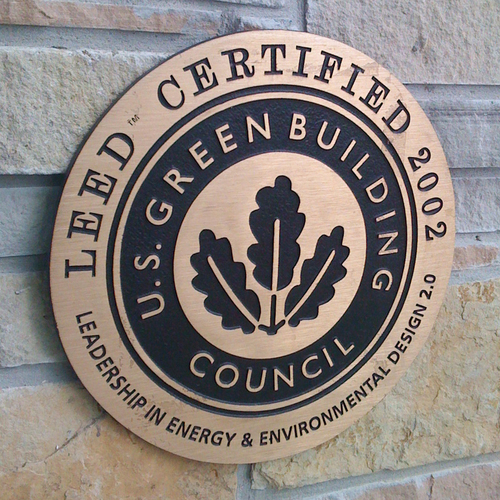Tommy Strong and GreenHaus Builders have primarily been remodelers for the last 18 years, but they had the opportunity to build a new home. And the main reason they agreed to build this house was “because the homeowner, the architect and designer were very dedicated to green building—in this case, the LEED certification program,” Strong says. “[The transition] has had its challenges. Our mind-set is very green in order to make the least impact on the site and the street and the world in general.”
More Job Site Visits
Open-Cell Spray Foam: Dallas, Texas
Affordable LEED: Westford, Mass.
Spray-Foam Retrofit: Brattleboro, Vt.
Other Video Series:
This house purportedly has the first sealed crawlspace in Houston. But to Dan Morrison of GreenBuildingAdvisor.com, those conspicuous cutouts at the foundation look like crawlspace vents. Strong explains: “Underneath the primary footprint of the house we have a semi-conditioned crawlspace. There’s a dehumidifier in the attic which will pump dry air down here into this crawlspace.” Morrison discovers that the ventilated space under the porch isn’t connected to the house at all—and that the porch boards won’t warp. The floorboards inside the house benefit from attention to detail as well. Strong explains: “Originally, there was a 1400-square-foot home here; it was falling down and collapsing. But it did have nice hardwoods in it. So we pulled all the hardwoods out, put them in storage, pushed the old house over, built this one, and then brought all that old flooring over here, along with about another 1400 to 1500 square feet that had been salvaged from a different home.”
They brought all the flooring pieces over a month in advance of installation “so they could acclimate, and then cleaned them, scraped them, installed them, sanded them, finished them.” Morrison approves of the interior finishes, and questions the particulars of the airtight envelope up on top of the house. Strong explains: “We brought in Icynene spray foam insulation, starting at the ridge and then the perimeter walls in the attic, and then the perimeter walls in the rest of the home.” All the mechanical ductwork is inside the envelope. There’s also a tankless water heater and a PEX manifold system. “The PEX manifold system allows one the flexibility to turn on or off any water circuit in the home, much like an electrical breaker box will allow you to turn off power. For maintenance, this can be especially valuable,” Strong says. While in the attic, Morrison notices the vent stack doesn’t run through the roof. It’s an air admittance valve, which Strong says allowed them to reduce the roof penetrations. “Some jurisdictions have trouble with their code officials on that. How’s that working out here?” Morrison asks. “We used to have a lot of trouble with it,” Strong admits, “but in the last two years or so, the city of Houston did adopt AAVs.” So, it sounds like green building is finally working its way into the codebooks.
Weekly Newsletter
Get building science and energy efficiency advice, plus special offers, in your inbox.









0 Comments
Log in or create an account to post a comment.
Sign up Log in